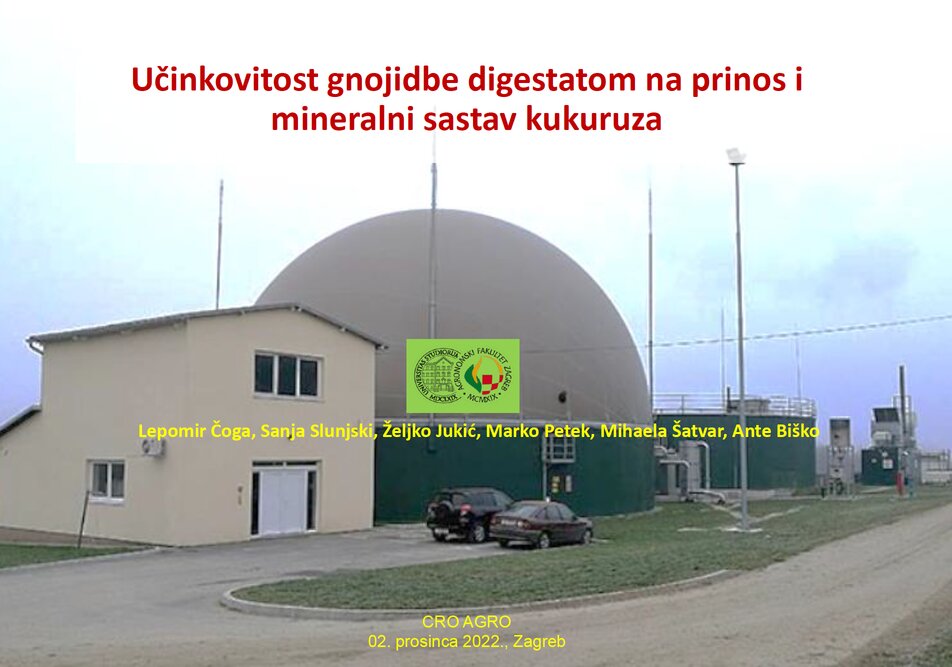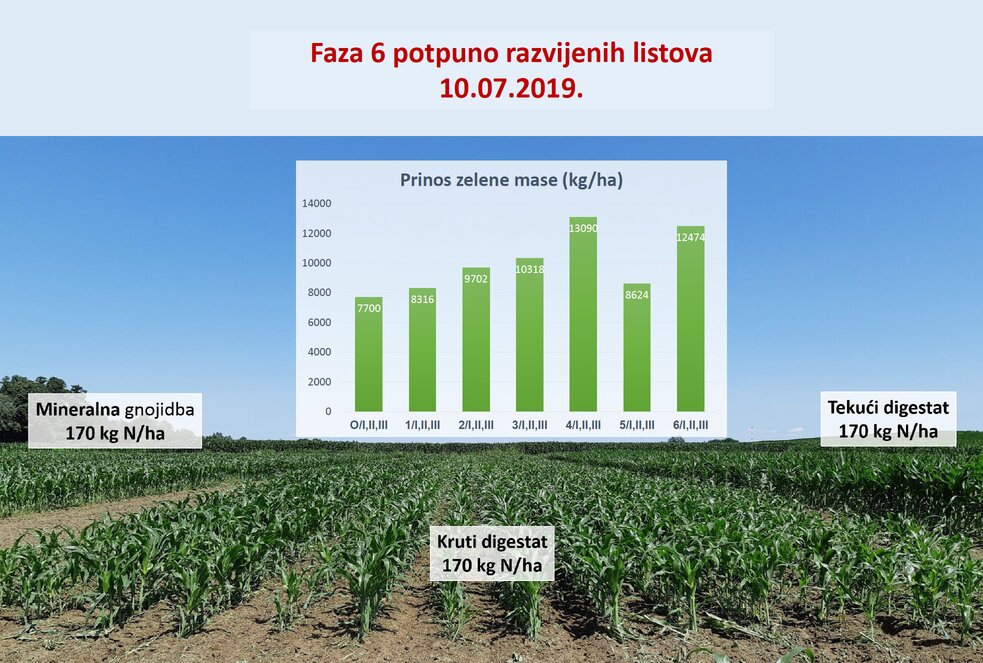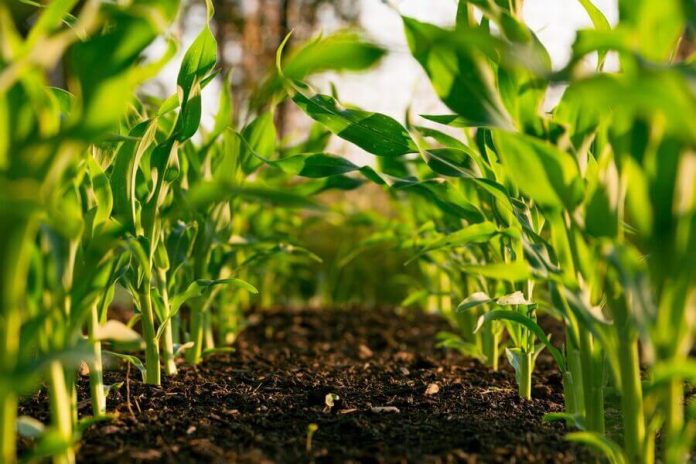Digestate is the byproduct of the biomass production process but also a highly valuable low carbon organic fertilizer that has the potential of transforming the European agricultural sector by providing an alternative to the regularly used chemical fertilizers – according to the European Biogas Association (EBA). Nevertheless, while in numerous European countries its multiple benefits have been recognized and is used as an organic fertilizer and soil enhancer which can have a lower price in comparison to mineral fertilizers, in Croatia it is still considered waste material. The status of digestate in Croatia was considered recently at the international fair CoAgro. The participants included Prof. Dr. sc. Lepomir Ćoga, Dr. sc. Sanja Slunjski, Dr. sc. Željko Jukić from the Faculty of Agronomy in Zagreb as well as Dalibor Vrček from the Family agricultural estate (OPG) Vrček.
How is digestate made?
Digestate is a product of anaerobic digestion and the raw material is composed of manure, slurry, energy crops, and biodegradable waste. In biogas plants in Croatia, the raw material used consists of the manure of various animals in proportion from 50 to 60%, energy crops in the form of corn and grass silage account for 25 to 30% while biodegradable waste, such as food waste from 3 to 25%. On an annual basis, from 41 biomass plants in Croatia, along with the production of biomass and electricity about 2 million tons of digestate are generated. What else could it use for not for fertilizing agricultural surfaces?
The profession praises it – the law does not recognize it
The greatest problem encountered by the biogas sector is the inadequate valorization of digestate as a low-carbon, highly valuable fertilizer which is free from harmful substances of inorganic and organic origin if we are dealing with digestate produced from input raw materials such as manure, slurry, energy crops, and biodegradable waste. Although such a digestate, according to analyses continually carried out by the agronomic profession, is a soil enhancer with the possibility of use on agricultural surfaces, the Croatian legislative framework does not allow for its use on food production agricultural surfaces. In spite of the fact that the research carried out on digestate as an organic fertilizer and its substitution for mineral fertilizers has shown that the use of digestate in the fertilization of agricultural crops is possible without negative impacts on the soil and plants when used appropriately.

Results of research and analysis
Experts of the Faculty of Agronomy in Zagreb carried out research on the effectiveness of digestate fertilizer on yields and mineral composition of corn. Through a series of analyses and research to date, they wished to contribute to the valorization of digestate as an organic fertilizer. The goal of the research presented at the round table was to establish the effectiveness of digestate as a fertilizer on the physical-chemical features of the soil, compare the impact of digestate fertilizing in relation to mineral fertilizers on the scope and quality of the yield, establish the usability of nitrogen from the digestate in relation to mineral fertilizers, establish the impact of digestate on the pollution of the soil-plant system and compare the costs of fertilizing with digestate with those of mineral fertilizers. To that end fertilization experiments and research were carried out in the area of the cadaster municipality of Rovišće in the Bjelovar-Bilogora County where scientists took samples of digestate from the biogas plant – both solid and liquid. They concluded that fertilization with digestate achieved a positive effect on the yield and quality of the silage corn and corn grains at harvest while the greatest yield was established with the use of liquid digestate. In none of the cases was soil or plant material pollution established by harmful substances of inorganic origin (heavy metals). Detailed results were put forward by prof. dr. sc Čoga during the round table in the presentation ‘The Effectiveness of digestate fertilization on the yields and mineral composition of maize’ (Učinkovitost gnojidbe digestatom na prinos i mineralni sastav kukuruza.)

The experience of farmers
The scientifically verified results were confirmed by the experience of Dalibor Vrček, who gets the digestate from his biogas plant of 500 kW and uses it in the production of agricultural crops on 400 hectares. He also has a farm with 2500 pigs. Applying the principle of circular economy, two years ago he set up a solar power plant that produces electricity for his needs while this year he rounded off the process by opening a butcher’s shop for his products. Understanding the importance of each segment of the circular economy he is also aware of the value of digestate. “Digestate is not waste and I can’t understand why it is not in the same category as compost. We are regularly carrying out analyses on the farm and they show that it is an ecological product of the first category. It is possible to achieve circular economy but our legislation is holding us back to the greatest degree.” Using digestate on his agricultural surfaces he decreased the use of mineral fertilizers by 40%. In his production, he uses chicken and beef manure, slurry, energy crops, and bio-waste from the kitchens and households of the city of Varaždin as the raw materials.
The agronomic profession considers that in the use of digestate as a fertilizer the same criteria should be applied as those regarding compost which is divided into three categories, in regard to which limit boundaries are established for each category. That would enable and considerably facilitate the use of digestate in agriculture. “The appropriate valorization of digestate as a highly valuable and low carbon organic fertilizer and its use in agricultural production should be one of the primary goals of contemporary Croatian agricultural production, science and the profession” according to prof.dr.sc. Lepomir Čoga.
Lower costs – greater competitiveness
In addition to being useful in a multitude of ways in the production of agricultural crops, by using digestate it is also possible to reduce the application of mineral fertilizers and thereby lower production costs and heighten competitiveness in the market, “ The most interesting thing for the producer is the comparative cost value in the production of silage corn in relation to the use of mineral fertilizers and digestate – the costs are double, about 13 thousand HRK per hectare in the application of mineral fertilizers as compared to digestate fertilization of about 6 thousand HRK“ prof dr. sc. Lepomir Čoga pointed out, basing his claim on the research carried out in the municipality of Rovišće in the Bjelovar-Bilogora County.
Lower consumption of energy and lower emissions of greenhouse gases
How much would the use of digestate decrease the need for synthetic fertilizers and would it effect the consumption of energy and emissions of greenhouse gases? One to two percent of the overall world consumption of energy and 3-5% of the total world consumption of gas is used for the production of nitrogen for agricultural needs through the Haber-Boschvim process. Per each ton of produced fertilizer, 7- 9 tons of CO2 are emitted. In these circumstances of the energy crisis, higher prices of energy sources, and in view of the fact that we are importing about 30 percent of fertilizers from Russia, it is clear how much could be saved by the use of digestate. The decreased used of mineral fertilizers would also lower the volume of methane and nitrogen oxide.
The necessity of changing the legislation
The biogas sector in Croatian is for the most part hindered by inappropriate legislation and a lack of knowledge on digestate and the possibilities of its use in agricultural production – how, where, and in which amounts it can be used. It is necessary to change the legislation in the Republic of Croatia which applies to agricultural production in order for the definition of digestate as a highly valuable organic fertilizer and its use in agriculture to acquire an appropriate legal framework.
According to Directive (EU) 2019/1009 digestate can no longer be treated as an organic fertilizer and soil enhancer, namely it is no longer a fertilizing product. Namely, the criterion for an organic soil enhancer has to have at least 20 percent of dry substance while liquid digestate has a maximum of 9 percent. It cannot be an organic fertilizer because it also does not have a sufficient amount of nutritious qualities. If a solid organic fertilizer contains only one declared primary nutritious substance the share of that substance has to be at least 2.5% of the overall nitrogen 2.0% of the overall phosphate pentoxide, 2.0% of the overall potassium oxide. If the solid fertilizers contain more than one declared primary nutrient (N, P, K) the sum of the shares of those nutrients has to be at least 4%. According to the mentioned Directive, the only place for digestate is to be one of the components in the use and generation of a specific fertilizing product or else as a component for the generation of an organic soil enhancer.
Nevertheless, while digestate has still not been appropriately valorized, in Croatia barn manure and slurry, which likewise do not satisfy the required percentage of solid substances according to the EU directive, are directly applied to the soil, are not thermally processed and are therefore, in comparison to digestate, full of harmful substances (pathogens)-
Biogas plants are important for fulfilling the ever more strict regulations for waste management and use of biodegradable organic waste for the production of energy. The biogas production technology decreases waste and waste management costs while for the biogas production process the least amount of water is used. Apart from ecological benefits, the use of biogas offers a series of other benefits in terms of the use of renewable energy sources which in themselves provide numerous social and energy benefits.
In the European Union, biogas is produced in a few thousand plants in which digestate is generated along with biogas. The largest number of biogas plants within the EU are in Germany (10846), Italy (1555), and France (717). In comparison with these countries Croatia lags behind considerably. Nevertheless, in domestic biogas plants, 2 million tons of digestate are produced annually. Will the Republic of Croatia treat it as a waste or recognize its value and legislatively enable its use, hangs in the air?










